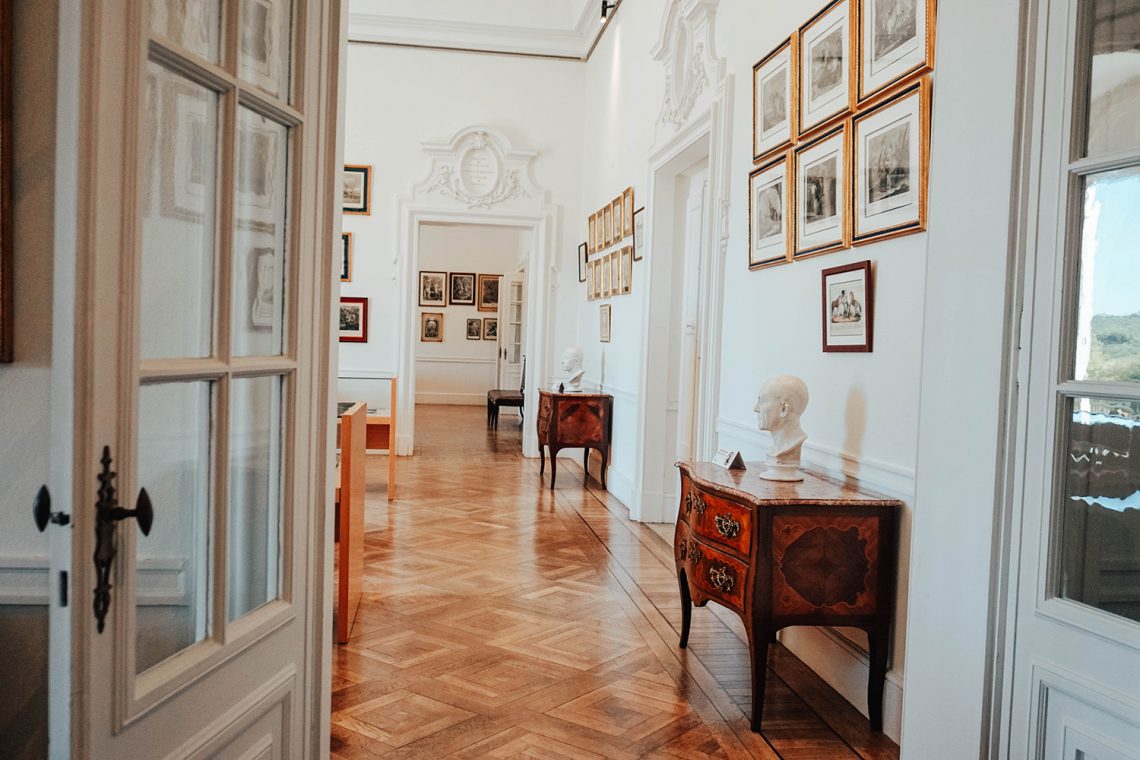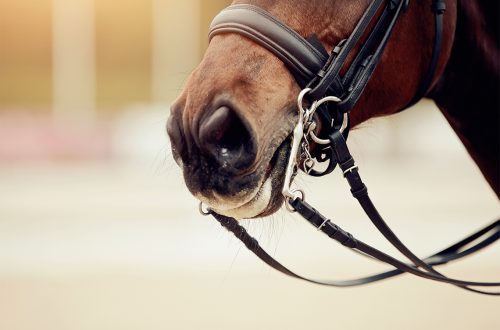
The Library of Equestrian Art: A Unique Classical Compendium
Just west of Lisbon, inside the Palace of Queluz, lies a hidden gem for riders dedicated to the art of equitation. Amongst the ornate baroque rooms and expansive French gardens of the Queluz Palace, lies an unexpected surprise: The Library of Equestrian Art.
Unique in the world, this library is dedicated solely to equestrian books and art, and holds about 2,000 books and pieces of artwork created over the past 500 years. Best of all, it is completely open to the public. Here, anyone can see foundational riding texts and stunning classical images that document the development of riding and especially dressage as we know it, from the works of Pluvinel and the Duke of Newcastle, to more modern horseman such as Nuno Oliveira, covering every aspect of horsemanship, horse care, and, of course, classical training.
This rare collection belonged to the exceptional rider and scholar Dom Diogo de Bragança, who was the 8th Marquis of Marialva, and so part of the royal family — and is the author of the highly respected book Dressage in the French Tradition. His entire collection of books and art on horsemanship is what is now made available to the public in the library, since it opened at the Palace of Queluz in 2015.

and light-filled space for delving into equestrian history.
While discovering this unique collection at the Palace may come as a surprise, the Palace of Queluz has been deeply connected to the development of classical riding in Portugal ever since the 18th century.
In 1726, Portugal’s Royal Court established its first Royal Equestrian Academy (Real Academia Equestre da Corte) at the Palace of Queluz under the reign of King João V, which went on to refine and lay out much of the foundation for classical Portuguese riding today. This beginning at the Palace also gave rise to the creation of the Alter Real stud, which officially established the Portuguese Lusitano breed to produce horses for the Royal School. This school, which thrived through the 18th and 19th centuries, continues to inspire the riders of the current school; the Portuguese School of Equestrian Art, which remains one of the four most renowned classical academies in the world. Thus, it seems only fitting that the library be housed here now, where much of Portuguese classical riding has developed and flourished on its grounds.

Still serving as a secondary home to the Royal Portuguese School of Equestrian Art today, the Palace of Queluz offers a place where Portugal’s tradition of equestrian art continues to be brought and kept alive. Just outside the library windows, at the far end of the elaborate hedgerow gardens, the riders of the Portuguese School can still be seen practicing with their distinctive bay stallions, and performing the classical exercises and haute école movements described in many of the library’s books. If you have the opportunity, be sure to visit the Palace in the early morning to catch the riders at work with their young horses, before heading to the Equestrian Library within the Palace, and to the School’s main stable in nearby Belém.

On walking into the library itself, one is immediately struck by the impressive and beautifully intricate old engravings on the walls, of horses performing piaffe, passage, shoulder-in, levade, and even of riders jousting. Here, riding theory that has been carefully recorded and curated by accomplished equestrians over centuries is preserved and kept alive — and seeing a glimpse into their daily exercises, methods, and tack is truly fascinating.

and other old equestrian artifacts on display.
One of the most important titles on display in the library is the Luz da Liberal e Nobre Arte da Cavallaria (The Light of the Liberal and Noble Art of Riding) by Manoel Carlos de Andrade, from 1790. This beautifully illustrated book formally outlines and describes the classical Portuguese methods and horsemanship of the Royal School, which provides a foundation for the training methods still practiced and preserved by the riders of the Portuguese School of Equestrian Art today. In many ways, this book makes the Portuguese School unique among the four great classical riding academies in the world — as the Portuguese School is the only one whose methods are formally codified and laid out in a single book.

However, the library’s texts also extend far beyond Portuguese classical riding, and with 1,400 books on training and horsemanship, it is a treasure trove of knowledge that demonstrates the real depth and breadth of the art and science of riding.
This, above all, shows the uniqueness of equitation: it reveals its complexity that often requires a lifetime to master, and its ability to capture the hearts and minds of horsemen and women over hundreds of years to write so extensively about its various details.
“If it was so simple, you wouldn’t have people that have been writing books [for] centuries until now. There are still people writing books about riding, because [even] today you find another solution for a little problem to achieve the purpose that we want — that is, the horse to be ridden as sensitively as possible.”
João Pedro Rodrigues
In sitting down with João Pedro Rodrigues, the Headmaster of the Portuguese School of Equestrian Art to talk about the Library of Equestrian Art, he pointed out that the library demonstrates the complexity of mastering equitation as an art and science. Having spent over 40 years working with the School, been a judge for the Lusitano breed for 10 years, and being a successful breeder of Lusitanos himself, João Pedro has a wealth of experience, and shared his thoughts on what the library holds. Here’s what he shared:
Some people think that riding is more about sitting on the horse, but I find more and more that it’s incredibly important to read and to study.
“If it was that, you wouldn’t have a library with 1,400 books — you’d have one book. If it was so simple, you wouldn’t have people that have been writing books [for] centuries until now. There are still people writing books about riding, because [even] today you find another solution for a little problem to achieve the purpose that we want — that is, the horse to be ridden as sensitively as possible. And because of that, almost every month and year there are new books about riding. And in other sports, maybe there are not so many books; I’m not an expert, but I don’t know if in tennis or football there are so many books explaining how to get to a good result.”
Yes; it’s much more technical that people think.
“Much more, because it’s the only sport that involves two living [beings]. …But we need to get [the horse] understanding everything, so we need to transmit our feeling to the horse and the horse needs to transmit his feeling to the rider, so that the couple, the team of rider and horse go [together] in the perfect way.”
In all its complexity, there is so much to gain from studying the work of riders throughout history. It gives us the opportunity to learn from their lifetimes of dedicated experience, and learn much more, and much more quickly, by integrating and building on their insights.
So, what are some of the most important titles for equestrians in the library?

What would you say are the most important equestrian books that are in the library?
“You have so many. You have La Guérinière, Xenophon, you have Pluvinel, Newcastle, de La Broue; the Portuguese books [of] Dom Duarte, Manoel Carlos de Andrade — all the books from the 16th, 17th, [and] 18th centuries are very important for Portugal. You also have the books from the 19th century, but in that case we have many books from outside [Portugal], from the French tradition of riding; Decarpentry, l’Hotte… many, many, there are many. Also, in Portugal from the 20th century, we have the books of Dom Diogo [de Bragança], and the most important are maybe the books of Nuno Oliveira, and some from the military but not from beginning of 20th century, like [the work of] Meneses and others.”
As João Pedro describes, there is plenty to explore — and with so many great riders’ works here, there are many new titles to discover.
While sometimes forgotten by modern riders, there can be incredible value in reading these older texts, whether at the library or in newly republished or translated versions. They provide a detailed, foundational education in training and riding up to the highest levels, which is not often taught today. They also provide a deeper, theoretical understanding of riding, our horses, and applying different techniques that can allow us to better identify how to bring out our horses’ best performance. Studying in this way can be invaluable to mastering our equitation, both as a science and as an art.

Walking through the library allows us to peer into the development and refinement of equitation over several centuries, with a wealth of information and titles for riders all in one place. While many books are in other languages as well as English, it is well worth a visit to see the impressive amount of knowledge on horsemanship compiled, the beautiful engravings of riders demonstrating their various techniques, and be inspired by the dedication to and refinement of the art of equestrianism by riders through the ages.
You can see the Library of Equestrian Art during its open hours at the National Palace of Queluz (Palácio National de Queluz), just 20 minutes west of Lisbon. For students of equitation and especially classical riding, it is a unique opportunity to see the largest library collection of equestrian works, and explore the development of riding as we know it.




